UPSC Exam > UPSC Notes > Important Lakes of India
Important Lakes of India - UPSC PDF Download
Introduction
- A lake is a surface water body that is surrounded by land. Rivers will be an outlet or an inlet to the lakes, i.e. lakes take the water from rivers or act as a source of water.
- Lakes are found in various landscapes like Hilly areas, plains, plateaus, rift zones, etc.
- There are various types of lakes that can be classified based on different criteria – They are
- Freshwater Lakes,
- Saltwater lakes,
- Natural Lakes,
- Artificial Lakes,
- Oxbow Lake (Formed by river deposits)
- Crater Lake, etc. (formed due to volcanic activity)
- Lakes have various applications like drinking water, irrigation, navigation, water storage, livelihood (fishing, etc.), impact on microclimate, etc.
Subglacial Lake
- A subglacial lake is a body of liquid water located between an ice sheet and the continental landmass.
- The water remains liquid because the ice sheet above the water acts as an insulator and traps geothermal heat from the Earth’s crust.
- Lake Vostok is the largest of Antarctica’s almost 400 known subglacial lakes. Lake Vostok is located beneath Russia’s Vostok Station in central East Antarctica, which is at 3,488 m above mean sea level.
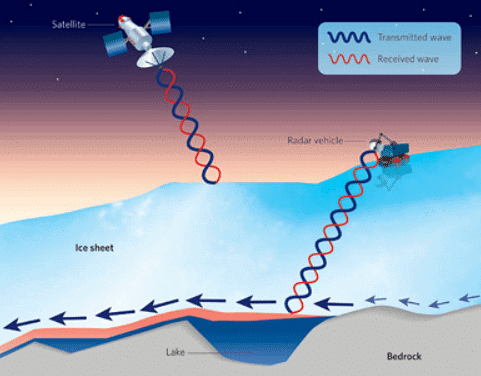
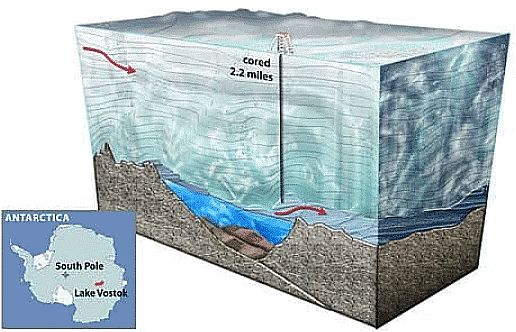
- Lake Vostok is the largest of Antarctica’s almost 400 known subglacial lakes. Lake Vostok is located beneath Russia’s Vostok Station in central East Antarctica, which is at 3,488 m above mean sea level.
Important Facts related to the Lakes of India
- Largest freshwater lake in India – Wular Lake, Jammu and Kashmir
- Largest Saline water lake in India – Chilika Lake, Odisha.
- Highest lake in India (Altitude) – Cholamu Lake, Sikkim
- Longest Lake in India – Vembanad Lake, Kerala
- Largest Artificial Lake in India – Govind Vallabh Pant Sagar (Rihand Dam)
- Dhebar Lake is India’s second-largest artificial lake, after Govind Ballabh Pant Sagar. It is located in the Udaipur District of Rajasthan.

Important Lakes of India - UPSC
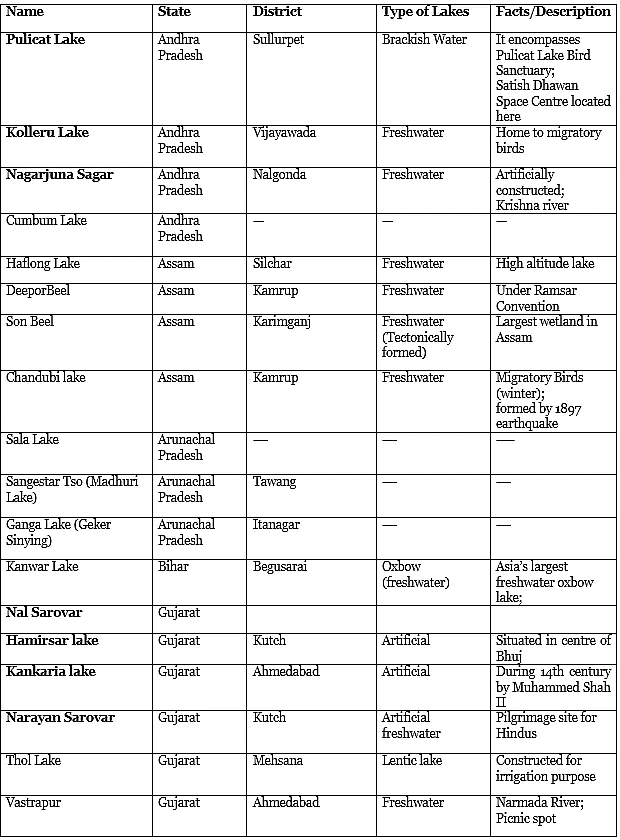

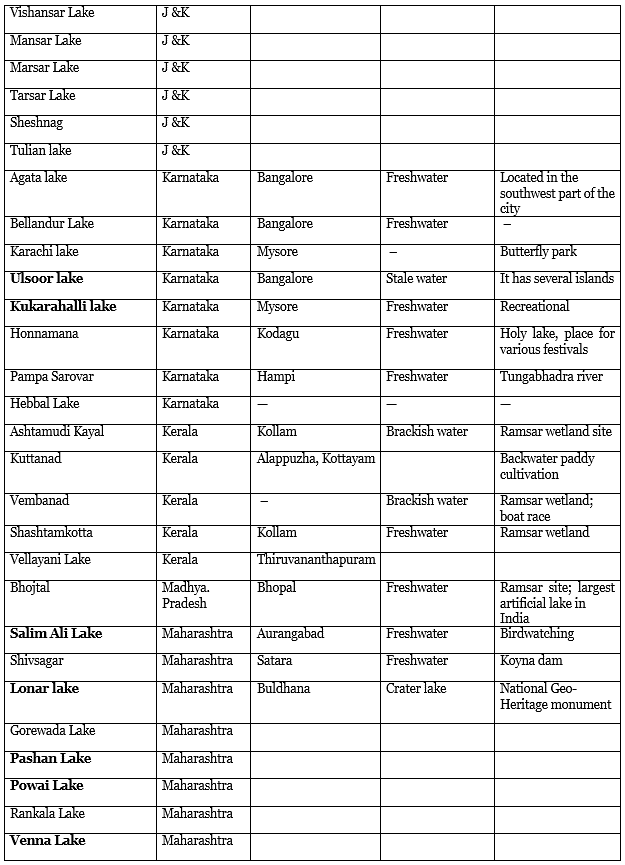
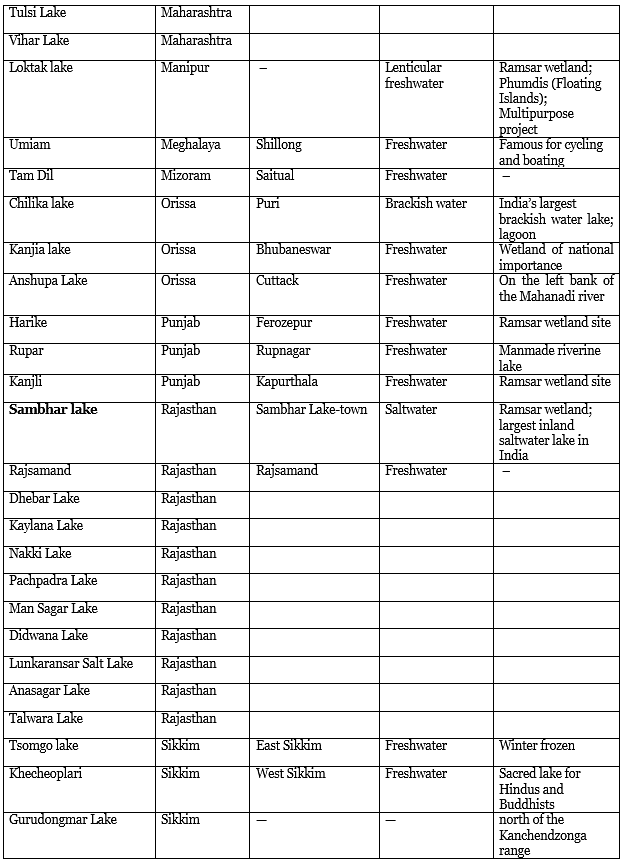

Important Lakes of the World
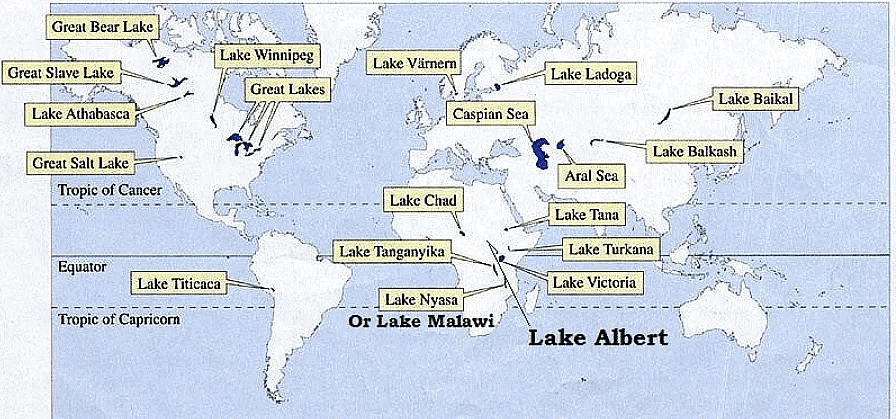
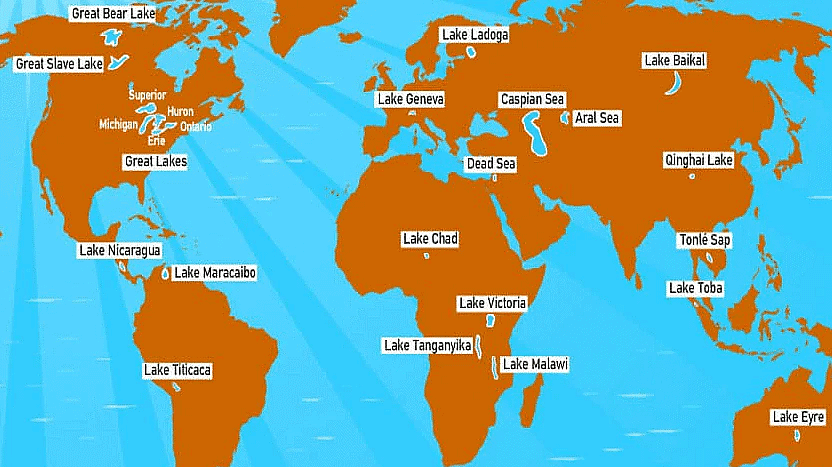
Note:
- Black Sea is not a lake since the Bosporus and Dardanelles Straits connect it to the Mediterranean Sea. Many big rivers fall into the Black Sea, making the salinity of its surface water half that of the ocean: 17‰.
- Caspian Sea and the Dead Sea are lakes. The surface and shores of the Dead Sea are 423 meters below sea level, making it Earth’s lowest elevation on land.
- While writing facts about lakes, people ignore the Caspian Sea because for them it is too big to be considered a lake. But it is still a lake.
- Just like everybody else, even I have ignored the Caspian Sea while stating the below facts.
Lake Baikal – Deepest Lake
- Lake Baikal is a rift lake located in southern Siberia, Russia.
- It is the largest freshwater lake by volume in the world, containing 22 to 23% of the world’s fresh surface water.
- It is the seventh-largest lake in the world by surface area.
- Maximum depth: 1,642 m (5,387 ft)
- It is the world’s oldest (25–30 million years) and deepest lake.
- It has a long, crescent shape.
- The region to the east of Lake Baikal is referred to as Transbaikalia or as the Trans baikal.
- The loosely defined region around the lake itself is sometimes known as Baikalia.
- UNESCO declared Lake Baikal a World Heritage Site in 1996.
- Baikal-GVD (Gigaton Volume Detector)
- Russian scientists launched one of the world’s biggest underwater neutrino telescopes, called the Baikal-GVD (Gigaton Volume Detector) in the waters of Lake Baikal.
- It is one of the three largest neutrino detectors in the world, along with the IceCube at the South Pole and ANTARES in the Mediterranean Sea.
- It seeks to study in detail the elusive fundamental particles called neutrinos and to possibly determine their sources.
Lake Tanganyika – Longest Lake
- The longest lake in the world. [660 kilometres long]
- It is also the second largest by volume.
- It is the second deepest lake in the world, after Lake Baikal.
World’s Highest and Lowest Lakes
- The world’s highest lake, if size is not a criterion, may be the crater lake of Ojos del Salado, at 6,390 metres. It is in the Andes.
- Pangong Lake (Pangong Tso), a high-altitude lake in the Union Territory of Ladakh.
- The world’s highest commercially navigable lake is Lake Titicaca, in Peru and Bolivia border at 3,812 m. It is also the largest lake in South America.
- The world’s lowest lake is the Dead Sea, bordering Israel and Jordan at 430 metres below sea level. It is also one of the lakes with highest salt concentration.
The Largest Lakes (surface area) by Continent
- Australia – Lake Eyre (salt lake)
- Africa – Lake Victoria, also the third-largest freshwater lake on Earth. It is one of the Great Lakes of Africa.
- Antarctica – Lake Vostok (subglacial)
- Asia – Lake Baikal (if the Caspian Sea is considered a lake, it is the largest in Eurasia, but is divided between the two geographic continents)
- Europe – Lake Ladoga, followed by Lake Onega, both located in northwestern Russia.
- North America – Lake Superior.
- South America – Lake Titicaca, which is also the highest navigable body of water on Earth at 3,812 metres above sea level. The much larger Lake Maracaibo is a contiguous body of water with the sea, so it is ignored. ,
Great Lakes
- The Great Lakes of North America are a series of interconnected freshwater lakes which connect to the Atlantic Ocean through the Saint Lawrence Seaway.
- Consisting of Lakes Superior, Michigan, Huron, Erie, and Ontario [in the order of west to east]. Superior, Huron, Michigan, Erie, and Ontario [In the order of largest to smallest].
- Lake Superior is the largest continental lake in the world by area, and Lake Michigan is the largest lake that is entirely within one country.

Shipping
- The Great Lakes are today used as a major water transport corridor for bulk goods.
- The Great Lakes Waterway connects all the lakes; the smaller Saint Lawrence Seaway connects the lakes to the Atlantic oceans.
Dead Sea
- Also called the Salt Sea.
- Lake bordering Jordan to the east, and Palestine and Israel to the west.
- It is Earth’s lowest elevation on land.
Aral Sea
- It was a lake lying between Kazakhstan in the north and Uzbekistan, in the south.
- Aral Sea has been steadily shrinking since the 1960s after the rivers that fed it were diverted by Soviet irrigation projects.
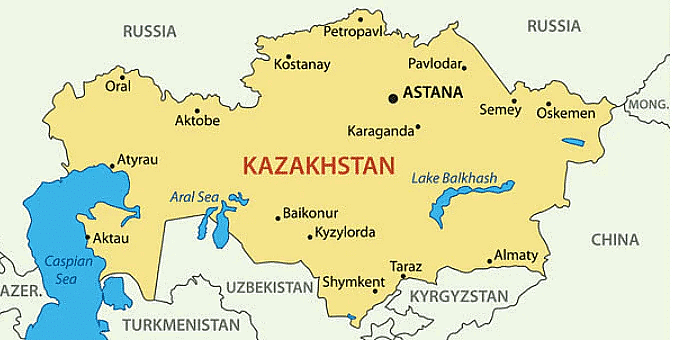
African Great Lakes
- A series of lakes constituting part of the Rift Valley lakes in and around the East African Rift.
- They include Lake Victoria, the second-largest freshwater lake in the world, and Lake Tanganyika, the world’s second-largest in volume as well as the second deepest.
FAQs on Important Lakes of India - UPSC
| 1. What are some of the important lakes in India? |  |
Ans. Some of the important lakes in India are:
- Wular Lake in Jammu and Kashmir
- Dal Lake in Jammu and Kashmir
- Chilika Lake in Odisha
- Vembanad Lake in Kerala
- Loktak Lake in Manipur
| 2. Which state in India is home to Wular Lake? |  |
Ans. Wular Lake is located in the state of Jammu and Kashmir in India.
| 3. What is the significance of Chilika Lake in Odisha? |  |
Ans. Chilika Lake in Odisha is the largest coastal lagoon in India and serves as a significant habitat for migratory birds. It is also known for its rich biodiversity and supports the livelihood of local communities through fishing and tourism.
| 4. Where is Vembanad Lake located? |  |
Ans. Vembanad Lake is situated in the state of Kerala in India. It is the largest lake in Kerala and is known for its scenic beauty and backwater tourism.
| 5. Which state in India is Loktak Lake located in? |  |
Ans. Loktak Lake is located in the state of Manipur in India. It is the largest freshwater lake in Northeast India and serves as a crucial ecological hotspot, supporting various species of flora and fauna.
Related Searches















